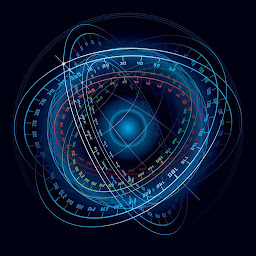Star Ship Flight Control
Space flight navigation is based on you being at the center point of a ball and traversing to another point within or on the outer edge of that ball while remaining as the center point. The thrust provided by various maneuvering rockets becomes your ailerons, flaps, spoilers, slats, lifters and rudders.
This image illustrates the complexities of vectoring from one plane to another in space as you can basically move in any direction while you remain at the center of the navigational bubble. The bubble moves with you.

An additional navigational issue, and therefore flight control issue is that your target location is in constant positional flux. It’s not waiting for you to arrive as would a city on Earth always be in the same position as you drive towards it in a car.
Earth for example, is traversing through space at a phenomenal 18.5 miles per second (67,000 miles per hour) while the International Space Station travels in orbit around Earth at a speed of roughly 17,150 miles per hour (about 4.76 miles per second!).
Arriving at a rotating space station and trying to line up for docking is also a complex flight control problem wherein you and the station are both moving. Fine thrust control is required to achieve docking. The configuration concepts I have illustrated below are just possible layouts of flight controls designed for spatial control using maneuvering thrust.
The controls are not labeled as they must be intuitive to have any validity. No particular thrust pattern or positioning of thrust on the vehicle is stated as that would defeat the purpose of the intuitive layouts. In theory, any intuitive thrust control layout would be applicable to the numerous variations of thrust types, quantity, directionality and position on the star ship.
Up, down, left, right, forward, backward and angular vectoring from the plane of orientation are all represented in the illustrations. Start, stop, idle and velocity are also represented in each.
The fanciful configurations illustrated in the next 4 images show how a joy stick or yoke are not the only flight control options for a star ship. When considering that thrust is the only way to maneuver in space, such control configurations as shown make sense.
There is, however, one major drawback to this form of flight control. Can you identify it?
Comments
Post a Comment